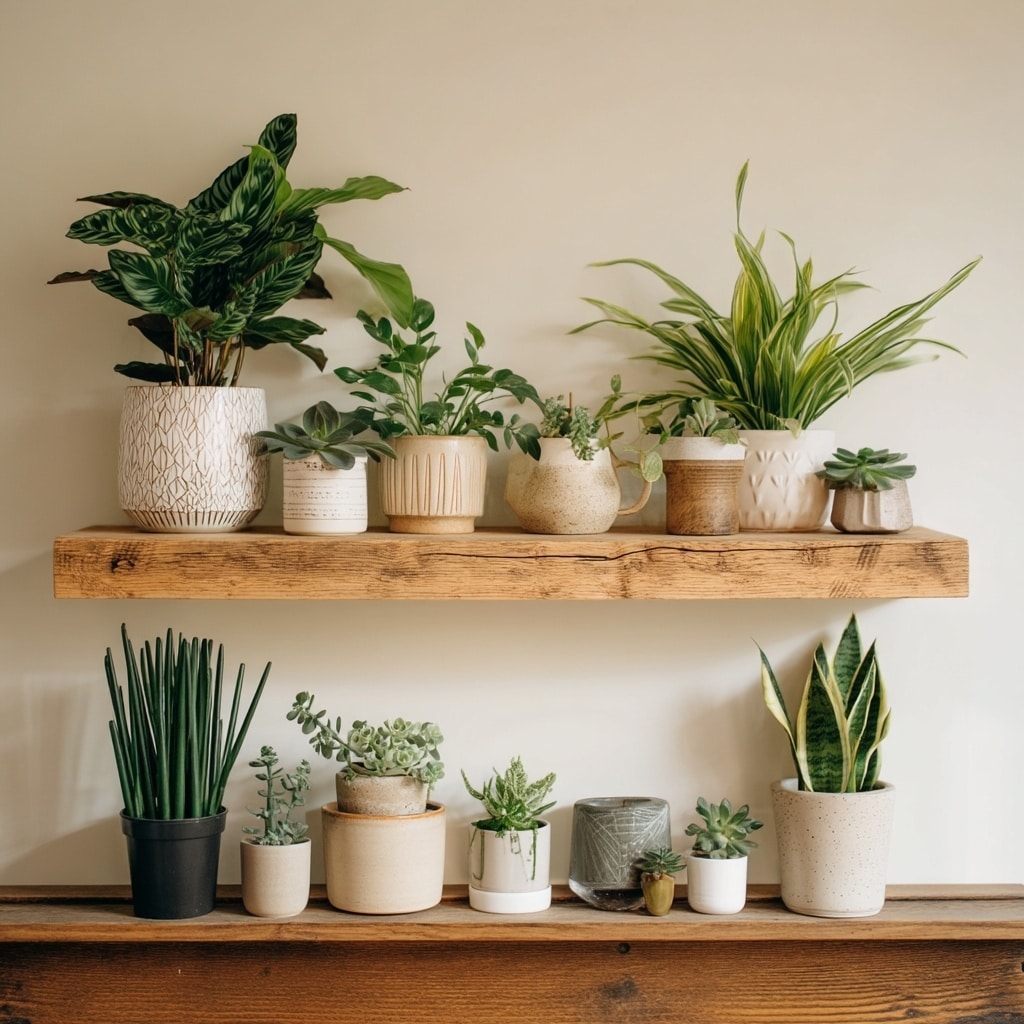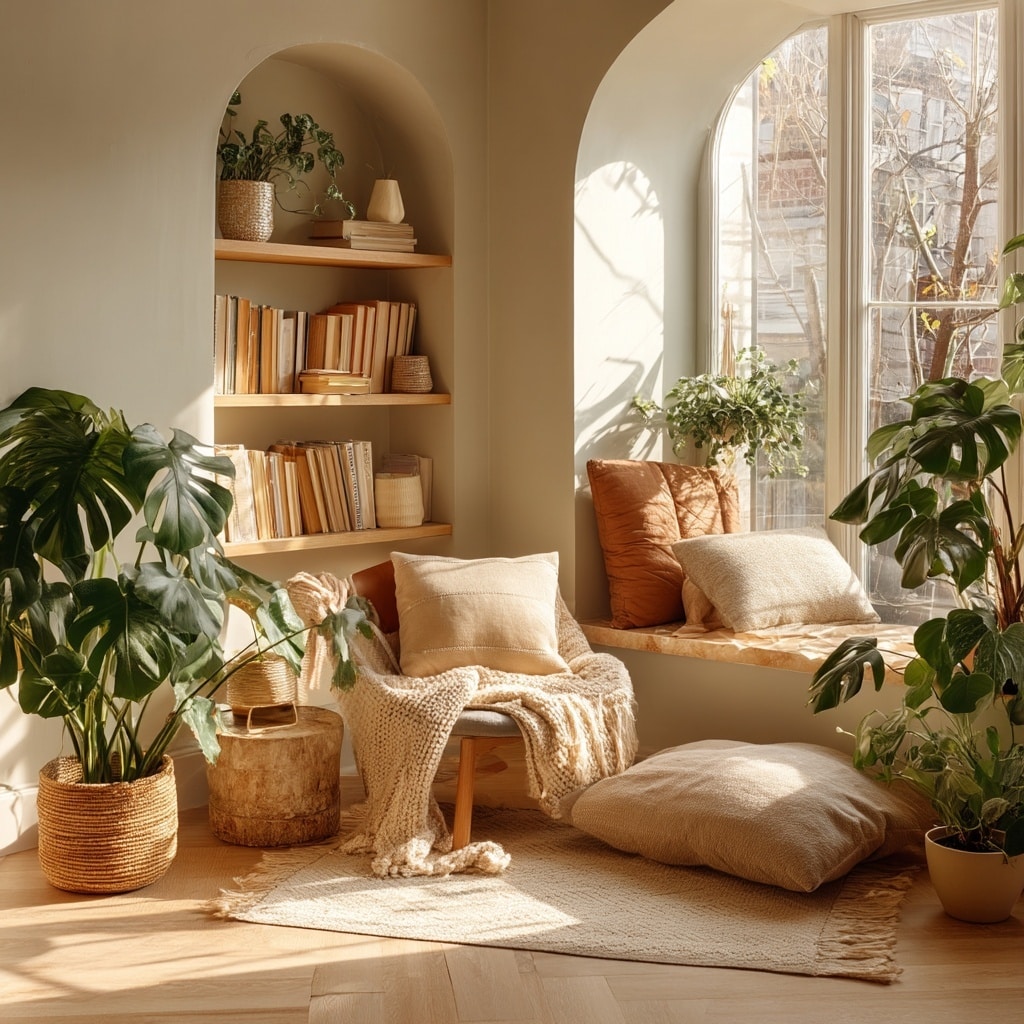Indoor plants aren’t just trendy decorations—they’ve become essential to how many people create calm, beautiful, and healthier living spaces. Whether it’s a few leafy companions on your windowsill or a full indoor jungle in your living room, surrounding yourself with greenery can genuinely lift your mood and improve your overall well-being.
In recent years, especially among younger generations, caring for indoor plants has become a rewarding part of daily life. It’s more than a hobby—it’s a lifestyle choice that supports mental clarity, emotional balance, and even physical health. If you’ve ever wondered why indoor plants make you feel so good, here are five real reasons they’re worth bringing into your home.
Table of Contents
Mental Health Benefits of Indoor Plants
The presence of indoor plants in your home or workspace can have a surprising effect on your mind. Just a few green leaves in your environment can shift your mood and bring a greater sense of calm.
🌿 They Lift Your Mood Naturally
Humans have always felt a deep connection to nature. Being surrounded by greenery—even indoors—can help reduce stress, lower anxiety, and create a peaceful atmosphere. Think about how much more inviting a room feels when it’s softened with a few plants. Their calming presence offers a quiet comfort that concrete walls or sterile decor simply can’t match.
🌱 Plant Care Builds Emotional Resilience
Caring for indoor plants can also bring a unique sense of purpose. Watching your plant grow under your care—even from a small sprout—can give you a boost of confidence. It’s a reminder that with consistency and patience, growth happens. Many people say tending to their plants helps them feel grounded, especially during overwhelming or uncertain times.
🧠 Improved Focus and Productivity
It’s not just emotional health that benefits. Studies have shown that people working or studying near indoor plants tend to concentrate better and feel more energized. The presence of plants helps reduce mental fatigue and creates a more pleasant, focused environment.
Physical Health Benefits of Indoor Plants

Beyond their visual appeal, indoor plants quietly support your body’s well-being. From purifying the air to easing allergy symptoms, the benefits go far beyond surface-level beauty.
🌿 They Help Clean the Air
Indoor air can be filled with pollutants from cleaning products, furniture, and even city smog. While plants aren’t a replacement for an air purifier, many houseplants help filter out common toxins like formaldehyde and benzene. Adding greenery like Snake Plant or Spider Plant can make your space feel fresher and more breathable—especially in enclosed areas.
🌼 Some Ease Allergy Symptoms
Contrary to the belief that plants trigger allergies, certain indoor plants are actually hypoallergenic. Varieties like English Ivy and Pothos can help reduce airborne mold and dust, improving indoor air quality for allergy sufferers. Just remember to wipe the leaves clean regularly to keep them working effectively.
Best Low Light Indoor Plants for Beginners

If you’re new to the world of indoor plants, don’t worry—you don’t need a green thumb to get started. Plenty of plants thrive with minimal care and don’t demand perfect sunlight or strict routines. Here are five beginner-friendly options that grow well in low-light spaces and are easy to manage.
1. Succulents
These compact plants store water in their thick leaves, making them highly drought-tolerant. While they do enjoy occasional sunlight, many types will do just fine indoors near a bright window. Perfect for forgetful plant parents.
2. Calathea (Prayer Plant)
Known for its vibrant leaf patterns and movement, Calathea is a favorite for low-light corners. It only needs watering twice a week and is also safe for homes with pets.
3. Spider Plant
Charming and adaptable, the Spider Plant thrives in indirect light and is almost impossible to kill. It also purifies the air, removing toxins like formaldehyde.
4. Sansevieria (Snake Plant)
This sculptural plant is practically indestructible. It tolerates dark corners, infrequent watering, and even helps remove multiple indoor pollutants.
5. Pothos (Devil’s Ivy)
Pothos grows fast, trails beautifully, and adapts to nearly any lighting. It also increases humidity, which can be helpful for dry indoor environments or allergy-prone individuals.
Conclusion
Bringing indoor plants into your home isn’t just about adding greenery—it’s a way to support your mental clarity, emotional balance, and even physical health. From cleaner air to improved mood and productivity, the positive effects of plants are real and backed by science.
Whether you’re a seasoned plant parent or just getting started, even a single leafy addition can transform the energy of your space. Start small, choose low-maintenance varieties, and let your home slowly bloom into a healthier, happier place to live.



